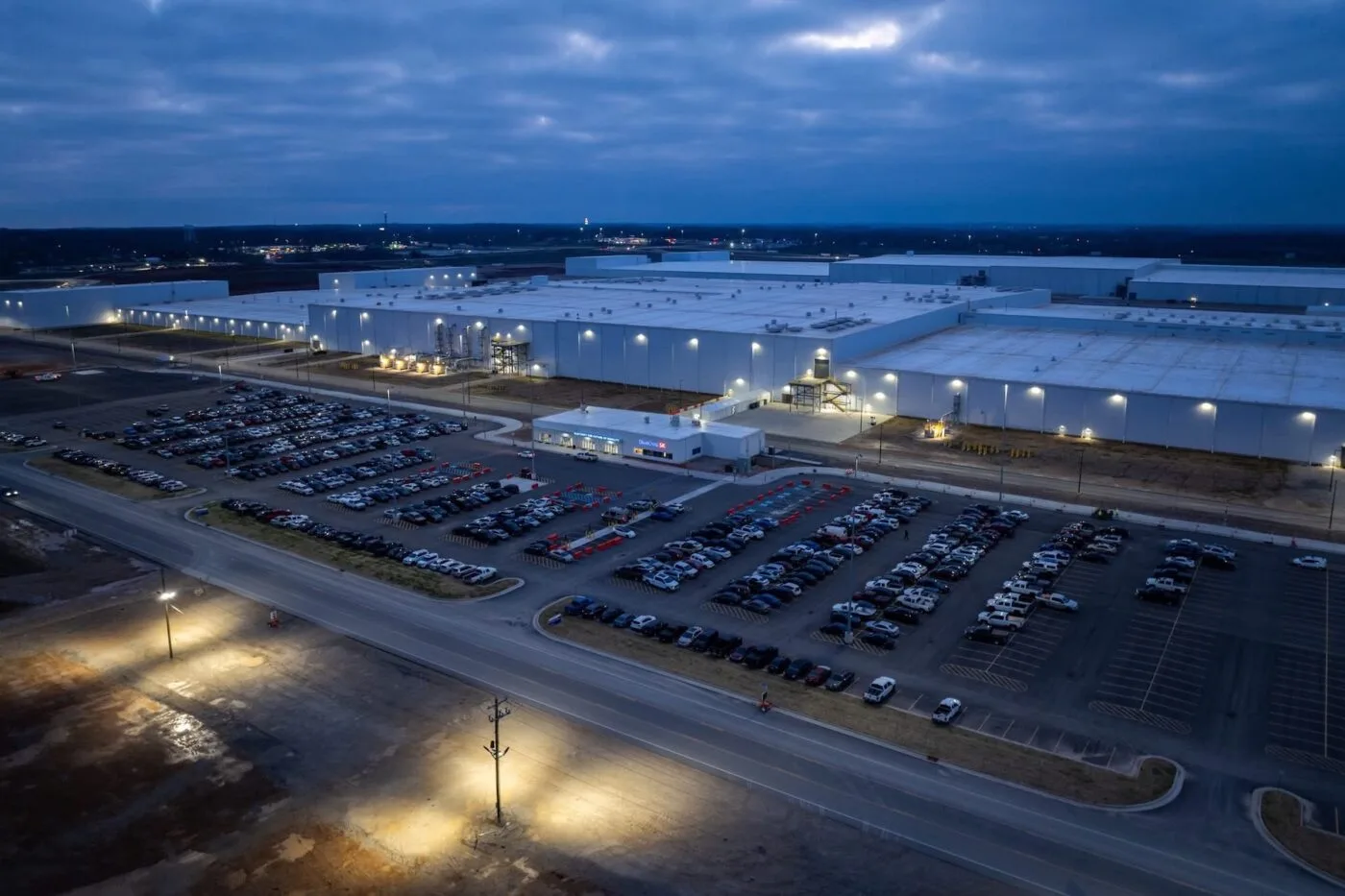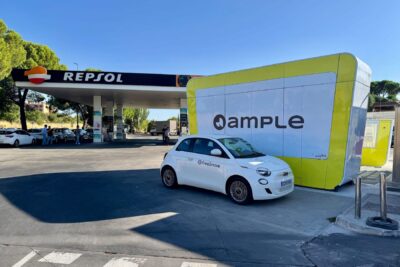BlueOval SK opens battery cell plant in Kentucky
Ford and SK On founded their joint venture BlueOval SK in 2022 and began construction of two battery factories in Glendale, Kentucky. These were to produce batteries for Ford and its subsidiary brand Lincoln electric cars with an annual capacity of 43 GWh each. At the time, this was a reasonable, albeit bold, decision, but it has since become apparent that the ramp-up of electric cars in the US is slower than expected. As a result, the plants are still far from being utilised to full capacity by Ford alone. That is why third-party customers are welcome. More on that in a moment.
In a brief announcement, Ford has now announced the official start of production at the first of the two plants (“Kentucky 1”). Batteries for the Ford F-150 Lightning are already rolling off the production line there, and from the fourth quarter onwards, batteries for the E-Transit with increased range (i.e. larger batteries) are also expected to be produced. “We are proud to be producing batteries at our Kentucky 1 plant that will power the next generation of electric vehicles,” said Michael Adams, CEO of BlueOval SK, at the opening. “The start of production is a significant milestone that strengthens our position in the electric vehicle battery market.”
According to a report published in the Wall Street Journal in the spring, although both factories are operational, Ford’s battery demand will not utilize one plant at all and will only partially utilise the second. The now officially opened Kentucky 1 factory will therefore also manufacture batteries for Nissan, the business newspaper wrote in May, citing insiders. For Nissan, this offers the opportunity to manufacture batteries in the US – and thus a quick way to reduce the risks posed by tariffs on imported vehicles and components. However, there is no official deal between the two sides as yet.
However, Bloomberg also recently reported that production is being opened up to third parties: Ford and SK On, as shareholders in the joint venture, are said to be working to attract additional buyers for surplus batteries. According to CEO Michael Adams, quoted in the report, these new customers could include not only electric car manufacturers but also companies in the stationary energy storage sector. He described the prospects of attracting new customers as “pretty good.”
The change in strategy demonstrates the pressure under which the US manufacturer and its South Korean partner SK On are operating. The market remains unstable: according to Bloomberg, sales of the Ford F-150 Lightning fell by 26 percent in the second quarter. And from September 30, electric cars are likely to be even harder to sell in the US, as the US tax credit for electric cars, which was torpedoed by US President Donald Trump, will then be abolished.
Ford is now virtually doomed by the fact that the company boldly embarked on the development of a domestic battery supply chain in 2022. The BlueOval SK joint venture alone is responsible for three battery factories: two plants in Kentucky and another in Tennessee. For these mega-investments, the partners secured a $9.2 billion loan from the US Department of Energy under the previous administration. Ford is now desperately trying to postpone or scale back its production plans, or even bring other buyers on board. For example, the newly opened Kentucky 1 complex will initially employ 1,450 people instead of the 2,500 forecast by the companies.
According to Bloomberg, the start of production at the Kentucky 2 plant has also been suspended. And in Tennessee, the commissioning of the battery cell factory was recently postponed to 2027, as production start-ups at the corresponding vehicle plant in Tennessee are also being delayed. “We are in an observation phase and are taking a conservative approach to ensure our safety,” Adams is further quoted as saying in the Bloomberg article. “I think the market will continue to grow, but at a slower pace.”
According to current information, Ford is responding to this development with a new focus on smaller and more affordable electric models. In addition, Ford plans to install LFP batteries in addition to NMC batteries in the future. To this end, the company is currently building an LFP battery cell factory in Marshall, Michigan. Ford plans to license the technology of Chinese industry leader CATL for the prismatic cells planned there. According to current information, the LFP battery factory is designed for 20 GWh per year and is scheduled to start production in 2026.
A U-turn in the electric car business is urgently needed: At the end of July, Ford presented its financial results for the second quarter, and despite more than doubling its revenue, losses in the Ford Model e electric car division rose to $1.3 billion. Ford’s management now expects Model e to post a loss of $5.5 billion for the full year 2025. Ford’s main problem is cost, and it cannot offer electric cars at the low prices that would be necessary to drive higher demand.
blueovalsk.com (PDF), bloomberg.com
This article was first published by Cora Werwitzke for electrive’s German edition





0 Comments